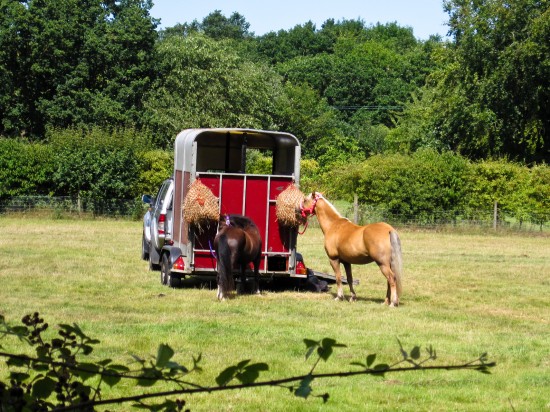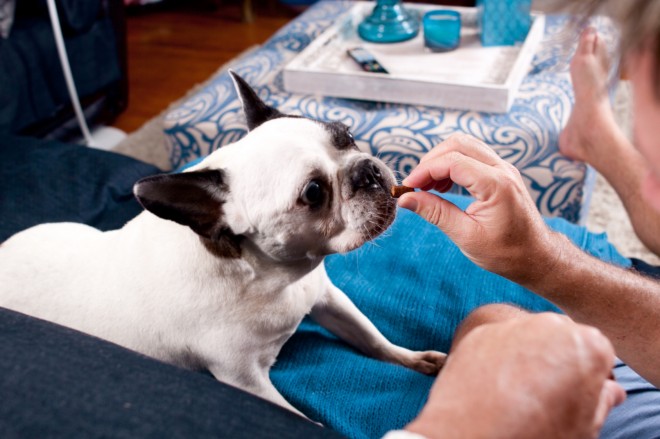
Training a dog requires specific techniques, according to their specific breeds. Different dog breeds have different temperaments and personalities. Whilst basic commands may be common for training dogs, the response of a dog will vary from breed to breed, and dog to dog.
The most common dog training methods are positive training (or clicker training). Corrective training methods exist, but are not recommended.
Here are the different dog training techniques so you would know what to apply to your dog according to its breeds:
Dog Whispering: The basis of dog whispering is your bond with your dog. You need to be able to read your dog's body language then use your own body language to train it. To a degree, it involves correction that are applicable to the dog. An example of 'appropriate correction' could be mimicking what a mother dog would do if the puppy is being aggressive. Care should be exercised and lots of research into the behavior of dogs is required. Dog Whispering can be an opportunity to tighten your bond between you and your dog.
Clicker Training: This is a positive training technique where a clicker indicates to a dog that it has done the right thing. This method is quite popular because it is gentle to the dog and the owner, and uses the dogs natural behaviours. The Clicker Training method can be used from basic commands to house training to behavioral problems such as excessive barking, dog nipping and growling.
Reward Training: This is also a positive reinforcement technique which dogs really love. This is simply giving treats like their favorite toy, chewy toy or favorite food. Reward training actually forms part of the Clicker Training method. Your dog will be encouraged to do more good and to behave well when you give the reward. To make the treats more enjoyable include praising your dog with a high pitched encouraging voice.
Corrective Dog Training: The training requires physical corrections to the dog like telling your dog to sit, give a gentle jerk on the collar or choke chain while pushing down it's rump. Once he obey sitting then reward him with praise like saying "Good Dog!". This type of training is not recommended as it is not al that successful and can cause behavioural problems with the dog. If you are asked to use this type of training, find another trainer.
To help you understand how your dog thinks to make training easier, you might want to consult a professional dog trainer. Remember to enjoy your moments with your dog while employing the appropriate dog training techniques.
The Dog Training Source specializes in providing training advice to dog owners. Whether you want your dog to sit, stop barking, walk nicely on the lead or simply just be quiet - this is the place for you.
 For Building Chicken Coops What Things You Need To Consider
For Building Chicken Coops What Things You Need To Consider
 Would Your Horse Make The Perfect Companion?
Would Your Horse Make The Perfect Companion?
 How To Ensure Your Horse Is Happy & Healthy When Travelling
How To Ensure Your Horse Is Happy & Healthy When Travelling
 Geckos And Salamanders - Their Similarities And Differences
Geckos And Salamanders - Their Similarities And Differences
 All About The “chiweenie” Or Weiner Dog
All About The “chiweenie” Or Weiner Dog
 Stick Insects - Do They Make Good Kids Pets?
Stick Insects - Do They Make Good Kids Pets?
 How To Stop Your Dog From Snapping For Treats
How To Stop Your
How To Stop Your Dog From Snapping For Treats
How To Stop Your
 Considering A Cockatiel?
Considering A Coc
Considering A Cockatiel?
Considering A Coc
 How To Groom A Long-haired Persian Cat
How To Groom A Lo
How To Groom A Long-haired Persian Cat
How To Groom A Lo
 Find Vital Pet Vaccines at Mansfield Animal Hospital
Find Vital Pet Vaccines at Mansfield Animal Hospital
Find Vital Pet Vaccines at Mansfield Animal Hospital
Find Vital Pet Vaccines at Mansfield Animal Hospital
 Eight More Interesting Cat Facts That You Probably Don’t Know
Eight More Intere
Eight More Interesting Cat Facts That You Probably Don’t Know
Eight More Intere
Copyright © 2005-2016 Pet Information All Rights Reserved
Contact us: www162date@outlook.com